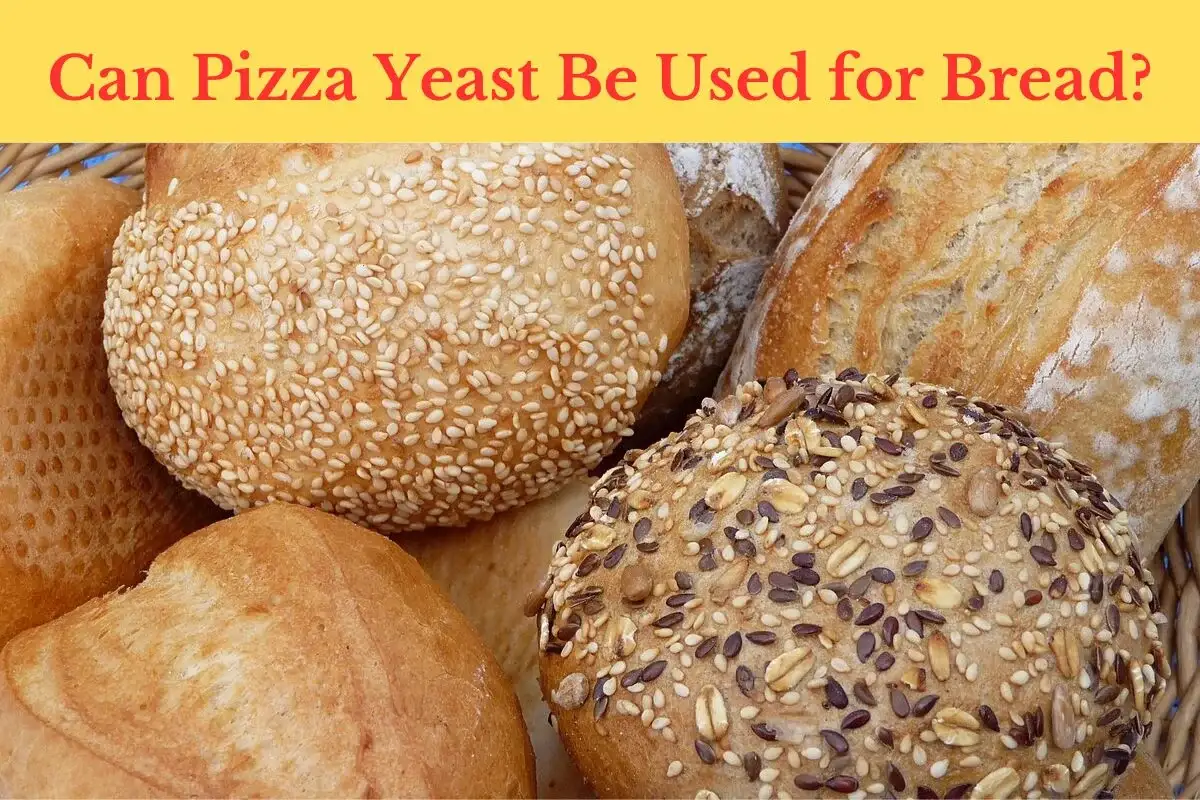
Can Pizza Yeast Be Used for Bread? A Comprehensive Guide
When it comes to baking bread, yeast is a fundamental ingredient. It’s what gives bread its fluffy texture and delightful aroma. While many types of yeast are available, one question often arises: Can pizza yeast be used for bread?
In this comprehensive guide, we’ll delve into this intriguing topic and uncover the secrets of using pizza yeast for baking delicious bread.
Table of Contents
ToggleWhat’s The Difference Between Pizza Yeast And Regular Yeast?
When it comes to the world of yeast, there’s a diverse array of options available, each designed with a specific purpose in mind. Two commonly used varieties are pizza yeast and regular yeast, but what sets them apart? Let’s explore the key differences between these two yeast types.
Composition and Ingredients
Pizza Yeast: Pizza yeast is a specialized blend carefully crafted to suit the unique demands of pizza dough. It typically contains a mixture of yeast strains, enzymes, and additives selected to facilitate rapid rising, resulting in a thin and crispy pizza crust.
Regular Yeast: On the other hand, regular yeast, often referred to as active dry yeast (ADY) or instant yeast, is a more generic option used for various baking purposes. It contains specific yeast strains and no additional additives, making it a versatile choice for a wide range of recipes, including bread, rolls, and more.
Rising Speed
Pizza Yeast: The standout characteristic of pizza yeast is its lightning-fast rising ability. This rapid rise is ideal for achieving the thin, crisp crust that is the hallmark of a delicious pizza. However, it may not be suitable for recipes that require a slower fermentation process, such as traditional bread.
Regular Yeast: Regular yeast, whether in the form of active dry yeast or instant yeast, offers a more controlled and moderate rise. This is perfect for breadmaking, as it allows the dough to develop complex flavors and textures over time.
Versatility
Pizza Yeast: Pizza yeast is primarily designed for making pizza crusts. While it can technically be used for other applications, its specific composition makes it less versatile for various baking endeavors.
Regular Yeast: Regular yeast, being a more generic option, is incredibly versatile. It can be used in a wide range of recipes, from bread and rolls to sweet pastries, making it a staple in many kitchens.
How To Use Pizza Yeast For Bread
While pizza yeast is specifically formulated for creating that perfect pizza crust, you might find yourself in a situation where it’s the only yeast available for your breadmaking endeavor. While it’s not the optimal choice, you can still use pizza yeast for bread by following these steps:
- Adjust the Rising Time: Pizza yeast is known for its quick rise, which may not be suitable for traditional bread. To compensate, extend the rising time. Instead of the typical 1-2 hours for bread, consider allowing your dough to rise for 3-4 hours or even overnight in the refrigerator. This slower fermentation process will help develop the desired bread texture and flavor.
- Mix Thoroughly: Ensure the pizza yeast is well-distributed in your bread dough. Dissolve it in warm water, just as you would with regular yeast, and mix it thoroughly with your dry ingredients. This step is crucial to activate the yeast and evenly distribute it throughout the dough.
- Knead Adequately: Proper kneading is essential when using pizza yeast for bread. It helps develop the gluten structure, which contributes to the bread’s texture and rise. Knead the dough until it becomes smooth and elastic, usually around 8-10 minutes.
- Be Patient: Using pizza yeast for bread may require more patience than when using traditional yeast. Allow the dough to rise adequately during both the first and second rise stages. This extra time will help compensate for the rapid rise of pizza yeast.
- Experiment: Every yeast behaves differently, and using pizza yeast for bread might result in a unique flavor and texture. Embrace the opportunity to experiment and discover a flavor profile that suits your preferences.
Advantages of Using Pizza Yeast for Bread
Using pizza yeast for breadmaking offers several advantages:
- Convenience: Pizza yeast is readily available and easy to use. It eliminates the need for a separate type of yeast for your bread recipes.
- Consistency: Pizza yeast consistently produces reliable results, ensuring your bread turns out perfectly every time.
- Versatility: You can use pizza yeast for a variety of bread recipes, from classic white loaves to specialty bread with herbs and spices.
- Time-Saving: Instant pizza yeast doesn’t require proofing, saving you precious time in the baking process.
Do You Really Need Pizza Yeast?
Pizza yeast is undoubtedly a convenient choice when you’re whipping up a quick and delicious pizza. However, when it comes to other baking endeavors, like bread, it may not be your best option.
The main reason is its rapid rising nature, which might compromise the intricate flavors and textures that result from a longer fermentation process. While it’s possible to use pizza yeast for bread, it’s not the most suitable choice.
If you’re an occasional baker and have pizza yeast on hand, you can experiment, but for consistently excellent bread, it’s recommended to stick with traditional yeast options like active dry yeast or instant yeast. These alternatives offer the versatility and reliability needed for various baking recipes.
Conclusion
In conclusion, pizza yeast can be used for bread, but it’s important to recognize the distinctions between pizza yeast and regular yeast. Pizza yeast is designed for quick, crispy pizza crusts with rapid rising capabilities, whereas regular yeast, like active dry or instant yeast, offers versatility and controlled rising suitable for various recipes, including bread.
If you must use pizza yeast for bread, make adjustments like extending the rising time, thorough mixing, proper kneading, patience during rising, and experimenting with flavors.
While convenient and time-saving, pizza yeast may not impart the same depth of flavor and texture as traditional yeast options like active dry or instant yeast, which are recommended for consistent and excellent bread results.
Your choice of yeast plays a significant role in your baking outcomes, influencing the characteristics of your creations, whether it’s a crispy pizza crust or a perfectly risen loaf of bread. Understanding these differences empowers you to select the ideal yeast for your culinary adventures. Happy baking!
Lindsey Mackenzie
Warning: Undefined variable $post in /home/u154887947/domains/bakesmartly.com/public_html/wp-content/plugins/gourmet-core/templates/blocks/gourmet-core-block-post-related.php on line 140
Warning: Attempt to read property “ID” on null in /home/u154887947/domains/bakesmartly.com/public_html/wp-content/plugins/gourmet-core/templates/blocks/gourmet-core-block-post-related.php on line 140
About me
Hi there! I’m Lindsey Mackenzie, the founder of Bake Smartly. Baking has been my passion since childhood, growing up in my father’s bakery. With Bake Smartly, I’m excited to share my love for all things sweet and savory. Join me on this delicious journey as we whip up scrumptious treats and sprinkle joy into every bite!






